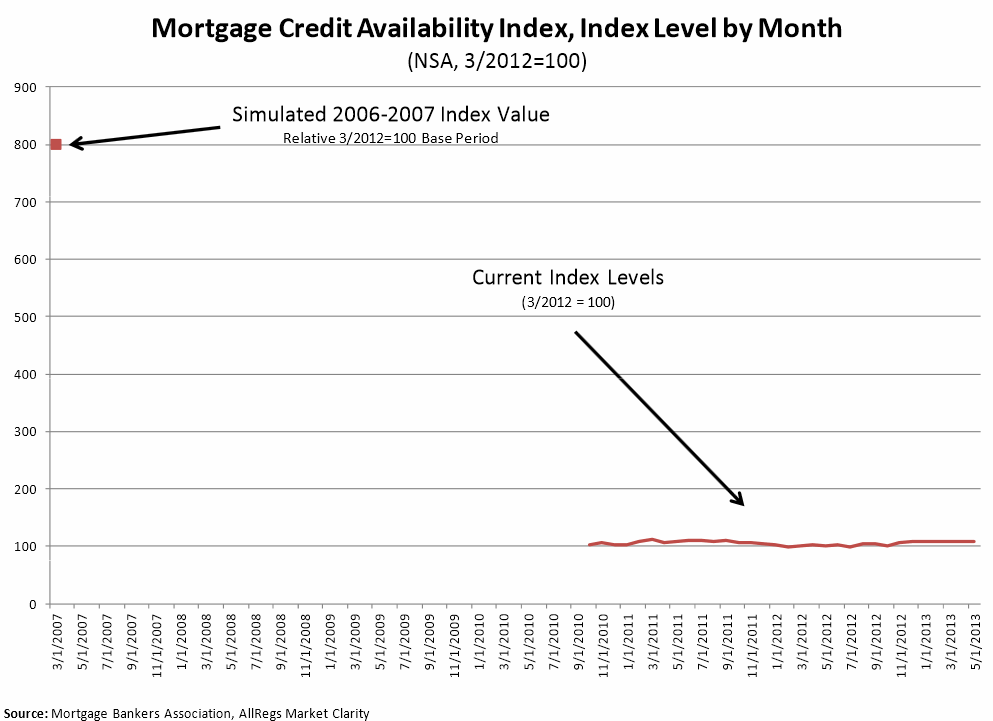The Mortgage Bankers Association (MBA) and AllRegs have released a new index that is designed to capture how the availability of mortgage credit fluctuates from month the month. Current mortgage underwriting parameters will be fed into an algorithm which will produce a single monthly index number, the Mortgage Credit Availability Index (MCAI),
Among the data factored into the index are those related to borrower eligibility (credit score, loan type, loan-to-value ratios, etc), underwriting criteria for over 85 lenders and investors, and data from AllRegs Market Clarity® product. The result will be a summary measure indicating the availability of mortgage credit at a point in time which MBA said it will be the only standardized quantitative index that is solely focused on mortgage credit.
The MCAI for May is 108.9 compared to 108.6 in April and both are up from the survey benchmark of 100 in March 2012. MBA and AllRegs have been tracking data for the index since 2011. To give the index some context, MBA said that had it existed in 2007 the number would have been roughly 800.

The following chart summarizes how mortgage credit availability has changed over past months as captured by the MCAI. Relative to the base period (March 2012), index values above 100 represent greater availability of mortgage credit while index values below 100 are an indication that mortgage lending standards have tightened. The May 2013 index value continues an upward trend and indicates that credit is more available than it was in previous months.

"We expect that the MCAI will be a valuable new source of information for market participants, policymakers and researchers. For lenders, the MCAI will provide an industry wide summary statistic regarding the trend in mortgage credit availability. For policymakers, the MCAI can be a helpful gauge regarding the impact of policy changes on the availability of mortgage credit. Finally, economists and other researchers may find the MCAI will provide a benefit in terms of its ability to capture credit trends, a vitally important component of the macroeconomic environment," said Mike Fratantoni, MBA's Vice President of Research and Economics.







